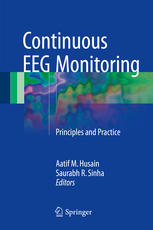

Most ebook files are in PDF format, so you can easily read them using various software such as Foxit Reader or directly on the Google Chrome browser.
Some ebook files are released by publishers in other formats such as .awz, .mobi, .epub, .fb2, etc. You may need to install specific software to read these formats on mobile/PC, such as Calibre.
Please read the tutorial at this link. https://ebooknice.com/page/post?id=faq
We offer FREE conversion to the popular formats you request; however, this may take some time. Therefore, right after payment, please email us, and we will try to provide the service as quickly as possible.
For some exceptional file formats or broken links (if any), please refrain from opening any disputes. Instead, email us first, and we will try to assist within a maximum of 6 hours.
EbookNice Team

Status:
Available0.0
0 reviewsThis book is designed to meet the need for a practically oriented textbook on the rapidly growing field of continuous EEG (cEEG) monitoring. A wide range of key clinical aspects are addressed, with explanation of status epilepticus classification, criteria for institution of monitoring, seizure patterns and their recognition, quantitative EEG analysis, and neuroimaging in patients undergoing cEEG monitoring. The value of cEEG and the nature of cEEG findings in various special situations are then reviewed, covering particular pathologies, critical care considerations, and prognostication. Treatments of nonconvulsive status epilepticus (NCSE) and nonconvulsive seizures (NCS) are discussed. The concluding section is devoted to important administrative issues including billing, staffing issues, comparison of EEG machines, and information technology (IT) issues.Continuous EEG monitoring offers the only reliable means of detecting seizures that are not clinically obvious in critically ill patients. Such seizures are common: approximately 20% of patients undergoing cEEG monitoring in hospital have NCSE or NCS. Against this background, many hospitals have started to offer cEEG monitoring as a basis for delivery of appropriate treatment. By presenting the state of the art in cEEG monitoring, this book will be invaluable to practitioners including neurophysiologists, neurologists, neurointensivists, intensivists, neurophysiology and epilepsy fellows, and neurology residents.